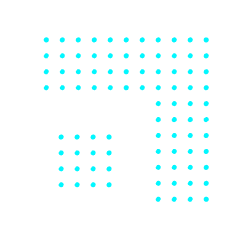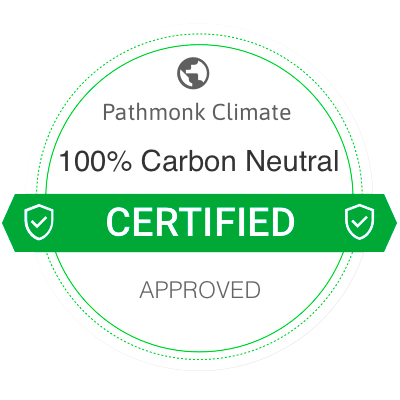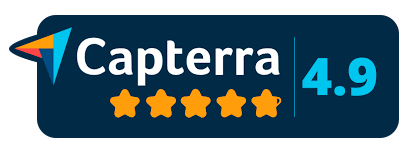Traditional lead generation has its roots in cold calls, mass email blasts, and hoping that a booth at a trade show turns into a few decent leads. While these methods might still have a place in some B2B strategies, they’re increasingly misaligned with how today’s buyers actually behave. They take time, burn through budgets, and often produce generic leads with little to no buying intent.
That’s why intent data platforms are revolutionizing the lead generation scene. Instead of casting a wide net and chasing down disinterested prospects, these tools help you focus only on the buyers who are actively researching solutions — the ones already in-market. And that shift changes everything: higher conversions, faster deal cycles, and more efficient use of marketing and sales resources.
Table of Contents
What is traditional lead generation — and why is it losing effectiveness?
Traditional lead generation refers to the classic set of tactics that companies have relied on for decades to attract potential customers. These include:
- Cold calling purchased contact lists
- Mass email blasts to broad segments
- Trade shows and in-person events for networking and booth demos
- Print advertising in industry publications
- Direct mail campaigns
- Referrals and word-of-mouth marketing
While these strategies can still generate leads, especially in relationship-heavy industries, they’re increasingly at odds with how modern buyers discover and evaluate solutions. More importantly, they’re showing serious signs of fatigue when it comes to efficiency and ROI.
The core problems of traditional lead generation
- High cost per real lead: Traditional methods often generate a high volume of contacts — but very few qualified leads. There’s a huge difference between a name in your CRM and someone actively considering your solution. That gap costs money. A campaign might generate 500 contacts, but if only 10 turn into sales conversations, the true cost per lead skyrockets.
- Long nurture cycles: Most traditional leads are cold. They haven’t shown intent, meaning your team has to spend weeks (or months) warming them up with nurture emails, calls, and follow-ups. It slows your sales velocity and clogs the funnel with unqualified prospects.
- Low personalization = low response: Without behavioral data, outreach is often generic. Emails get ignored. Calls go unanswered. Messages feel misaligned with what the prospect actually cares about — because you’re guessing, not responding to real signals.
- Hard to track ROI: Traditional lead gen lacks the built-in tracking and analytics that digital-first tools offer. You might know how many brochures you handed out or how many emails were opened, but tying those actions to pipeline and revenue is difficult at best.
- Scaling requires more headcount, not smarter systems: Want to reach more leads with traditional tactics? You’ll likely need to hire more SDRs, go to more events, or invest in larger ad buys. That’s linear growth — not scalable efficiency.
Let’s say you spend $5,000 on a trade show booth. Over two days, your team collects 100 business cards from attendees. After following up, only 15 people respond, and ultimately, just 2 book a demo. That’s a $2,500 cost per booked meeting — without factoring in travel, printed materials, or staff hours.
Compare that to showing a personalized experience to a warm website visitor who’s already comparing vendors, and it’s easy to see why the traditional model is breaking down.
Generate better leads to grow your sales
Discover new strategies to unlocking a flood of high-quality leads from your website.
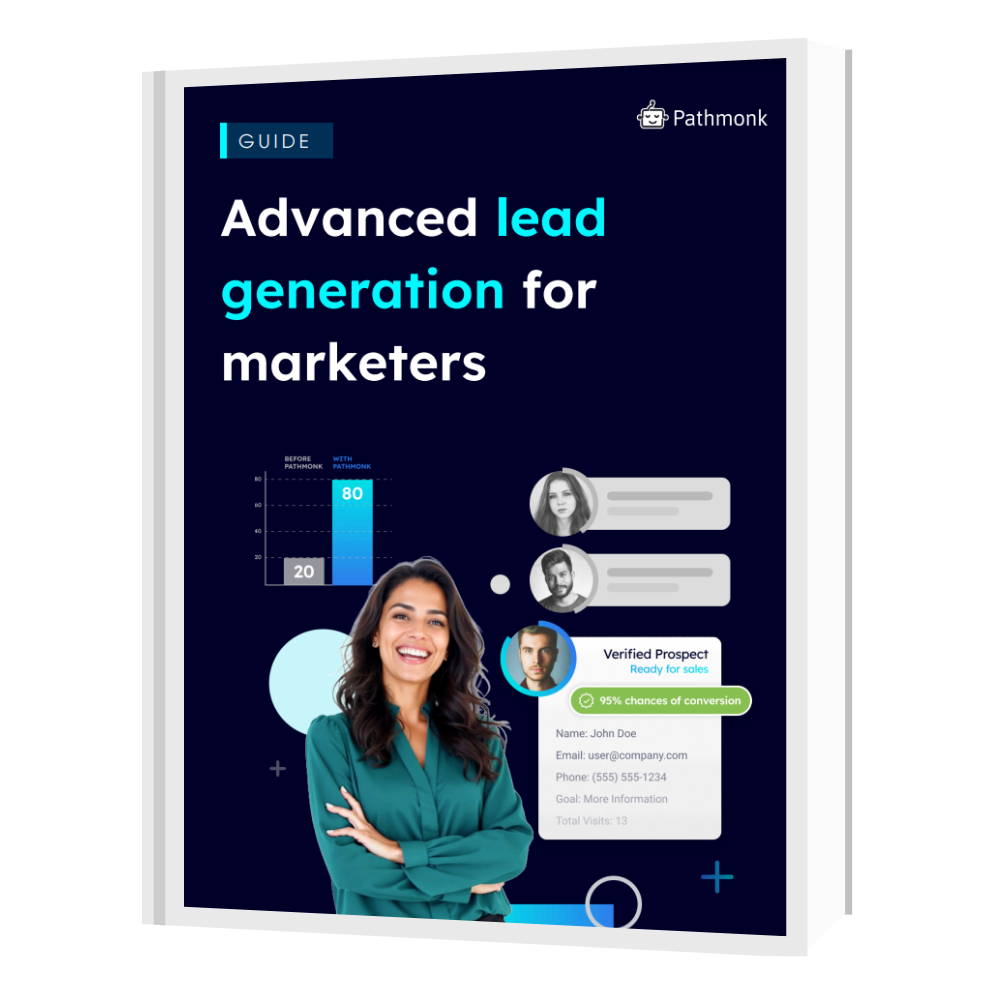
What is an intent data platform?
An intent data platform is a tool that helps you identify which companies or individuals are actively researching solutions like yours, before they ever fill out a form or speak to sales. It detects digital buying signals that indicate where a potential buyer is in their journey, so you can prioritize outreach to the prospects most likely to convert.
Unlike traditional lead generation tools, which rely on static contact lists or demographic filters, intent data platforms work by analyzing real-time behaviors that reveal intent — such as visiting specific pages, comparing vendors, reading technical documentation, or interacting with competitors’ content.
Intent data = behavior over guesswork
The big shift here is moving from who someone is (job title, company size, location) to what someone is doing (searching for alternatives, consuming pricing content, comparing options).
And that distinction makes all the difference.
Instead of casting a wide net and hoping someone bites, intent data platforms let you focus your efforts on the 3% of your audience that’s actively in-market. These are the buyers showing signs of urgency — and the ones most likely to convert quickly.
Types of intent data: first-party vs third-party
Most platforms use a mix of two types of data:
- First-party intent data: This is behavior tracked on your own digital properties. For example:
- Website visits to product or pricing pages
- Time spent watching demo videos or reading case studies
- Form fills, chat interactions, or webinar attendance
- In-app usage (for PLG or freemium SaaS models)
- Third-party intent data: These are signals gathered from outside your ecosystem. For example:
- Searches on review sites (like G2 or TrustRadius)
- Visits to comparison blogs or competitor pages
- Engagement with ads or content on publisher networks
- Social media mentions or interactions
Combined, this behavioral data gives you a complete picture of who’s ready to buy — and what they care about.
How intent data platforms work (in simple terms)
Here’s the typical flow:
- The platform collects behavioral data across multiple digital touchpoints.
- It identifies patterns that match high-intent behaviors (e.g. pricing page + competitor keyword search).
- Using AI and predictive scoring, it flags accounts that are most likely to convert.
- These insights are pushed to your CRM, sales engagement platform, or even your website — allowing for real-time action.
Pathmonk goes a step further by not just scoring leads but changing the website experience in real time — showing tailored content, testimonials, or calls-to-action depending on the user’s behavior.
Why intent data platforms are a game-changer
Here’s why marketers and sales teams are moving fast in this direction:
- Better lead quality: You’re no longer targeting leads who might be interested — you’re targeting those who already are.
- Shorter sales cycles: Reaching out at the right time (when interest is high) leads to faster decisions.
- Higher conversion rates: Personalized messaging aligned with buyer intent converts better than cold outreach.
- Smarter use of resources: Sales teams spend time on leads that are most likely to close — not on random names in a database.
- More predictable pipeline: Behavioral trends help forecast which leads are entering the funnel and when.
Let’s say a B2B SaaS company gets hundreds of visitors per day. Most tools can tell you which pages are popular. But an intent data platform like Pathmonk tells you which companies are viewing the pricing page, which users came from comparison articles, and which visitors are returning for the second or third time this week.
Then, it automatically adapts the website experience to match that behavior — for example, showing a relevant testimonial or triggering a short survey that qualifies them further.
This isn’t just about tracking. It’s about acting in real time on intent — and that’s where traditional tools fall short.
Grow your SaaS pipeline with personalized interactions
Leverage AI-powered personalization to increase qualified leads, demos booked, and purchases.

Side-by-side comparison: intent data platforms vs traditional lead generation
When it comes to generating leads, the gap between traditional methods and intent data platforms isn’t just about technology — it’s about efficiency, timing, and ROI.
Traditional lead generation still relies heavily on volume: cast a wide net, hope something sticks, and manually follow up with every contact. Intent data platforms flip the model. They use behavior and real-time analytics to prioritize only the leads showing clear signs of purchase intent.
Here’s how they compare across the most critical dimensions:
| Criteria | Traditional lead generation | Intent data platforms |
| Lead source | Cold lists, event contacts, purchased databases | Real-time behavioral signals from digital activity |
| Targeting approach | Based on demographics and firmographics | Based on observed buyer intent and interest |
| Conversion rate | 5-10% (often lower for cold contacts) | 20-25% on average for intent-driven leads |
| Time to close | 3-6 months (cold leads need nurturing) | 1-2 months (prospects are already in research mode) |
| Cost per lead (CPL) | Lower upfront cost ($50-100) but less efficient | Higher upfront cost (normally from $200) but better ROI and lower CAC |
| Sales prioritization | Manual; often based on gut or seniority | AI-powered, based on real-time behavioral scoring |
| Personalization capabilities | Limited to basic segmentation | Dynamic, personalized experiences driven by behavior |
| Scalability | Linear, scaling requires more people, time, and events | Exponential, scalable through automation and AI |
| Tracking & attribution | Hard to tie actions to outcomes | Built-in analytics and pipeline attribution |
| Resource intensity | High (calls, emails, events, travel) | Leaner (automated triggers, fewer wasted touchpoints) |
Bottom line? Intent data doesn’t just improve lead gen — it transforms it.
It allows teams to move from manual outreach to precision targeting, from guesswork to data-driven engagement, and from low-yield campaigns to high-ROI pipeline generation.
While traditional methods may still have a role to play — especially in long-cycle or relationship-driven sales — the bulk of modern lead generation is shifting toward platforms that help you spot buyer intent early and act fast.
And if you’re not doing it, your competitors probably are.
How Pathmonk takes intent data to the next level
Most intent data platforms stop at identifying leads. Pathmonk goes further — by acting on that data in real time to turn visitors into qualified leads automatically.
It’s not just about knowing who’s on your website. It’s about knowing what they want, where they are in the buying journey, and what will nudge them to convert — and delivering that experience instantly.
Pathmonk’s unique approach: behavioral AI meets real-time personalization
While other platforms offer intent scores or third-party research data, Pathmonk focuses on the most accurate intent signals you can get: the behavior happening on your own website.
Here’s how it works:
- Pathmonk tracks every visitor’s micro-interactions — page visits, scroll depth, click patterns, revisit frequency, and more.
- It uses AI to predict the visitor’s journey stage (awareness, consideration, decision).
- Based on this prediction, it automatically adapts the website experience in real time:
- A first-time visitor might see a short explainer or ebook teaser.
- A repeat visitor on the pricing page might get a testimonial slider or demo invitation.
- A visitor reading case studies might be shown a client success video or decision-focused FAQ.
No manual triggers. No cookie banners. No guesswork. Just personalized interactions, optimized to match the visitor’s intent and increase conversions.
What sets Pathmonk apart from traditional intent platforms?
| Feature | Traditional intent data tools | Pathmonk |
| Intent source | Third-party data or page visits | Real-time behavioral signals on your site |
| Personalization | Usually limited to CRM workflows or ads | Instant micro-experiences based on AI predictions |
| Tech requirements | Often needs dev support or complex setups | No-code setup with visual builder |
| Conversion focus | Lead scoring only | Full-funnel optimization to increase conversion rates |
| Visitor privacy | Relies on third-party cookies or scripts | Fully cookieless and GDPR-compliant |
| Speed to impact | Long ramp-up and integration | Immediate improvements from day one |
Built for performance across industries
Pathmonk works across all types of businesses, from SaaS companies trying to increase demo bookings, to marketing agencies looking to prove client ROI, to services needing more qualified leads without increasing traffic spend.
Whether you’re selling a product, a platform, or professional services, Pathmonk helps you:
- Reduce bounce rates from high-intent pages
- Increase conversions without redesigning your website
- Surface the right message at the right time
- Identify the companies behind anonymous traffic
- Gain full-funnel insights on the buyer journey
Clients using Pathmonk often see:
- 2–4x more demo bookings from the same traffic
- Up to 30% drop in acquisition costs
- Faster qualification and reduced sales cycles
It’s the difference between treating all visitors the same and treating each one like a real prospect, based on what they’re actually doing.
Boost your clients' performance and keep them longer
Achieve higher returns for your customers with AI- personalized customer journeys.
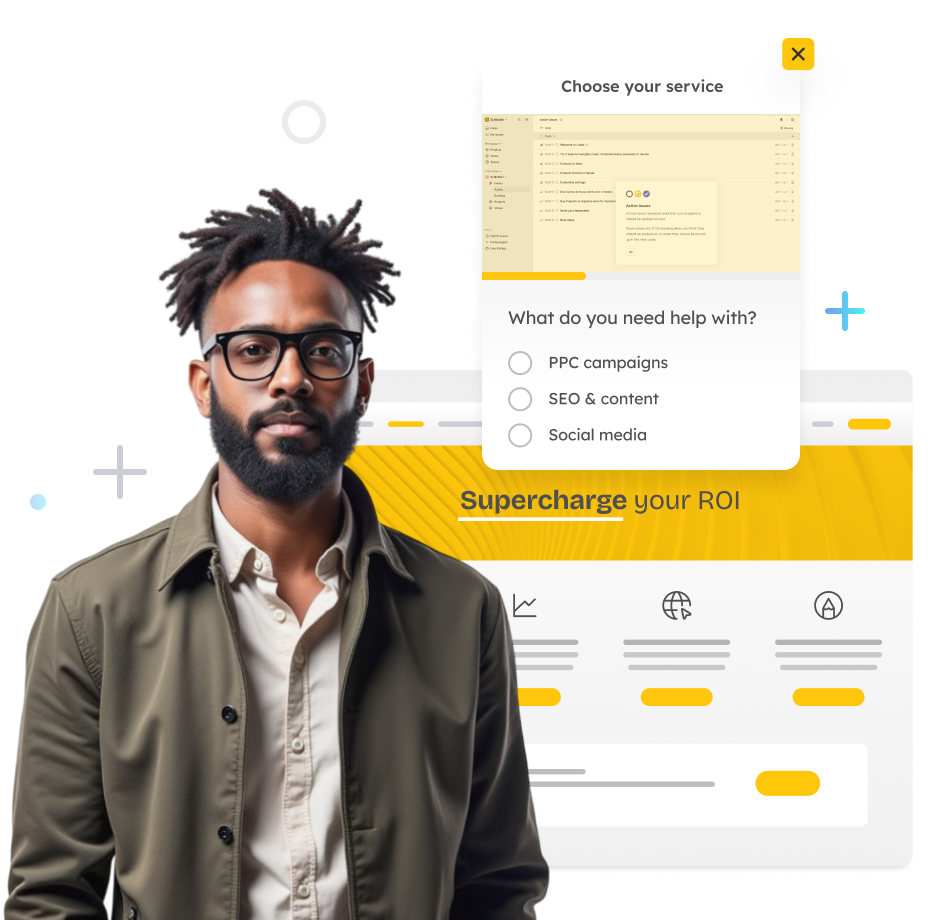
When should companies switch to intent data platforms?
If your marketing and sales efforts feel like pushing a boulder uphill, it’s probably not your team — it’s your tools. Many companies hold onto traditional lead generation tactics out of habit, but there are clear signs that it’s time to evolve. Intent data platforms don’t just add another layer of insight; they shift your entire go-to-market strategy from reactive to predictive.
These are 5 signs your business is ready for intent data:
- You’re generating leads, but they aren’t converting
If you have MQLs filling your CRM but barely any SQLs moving to pipeline, it’s a red flag. Low lead quality often means you’re targeting based on assumptions, not behavior. Intent data helps you cut through the noise and focus on leads already in buying mode.
- Your bounce rate is high and engagement is low
Visitors come to your site but leave without taking action? That usually means the content isn’t aligned with where they are in their journey. With real-time behavior tracking, intent platforms like Pathmonk personalize the experience to reduce friction and keep them engaged.
- Sales cycles drag on for months
If your sales team spends weeks warming up cold leads, it’s time to rethink your funnel. Intent data surfaces prospects already researching — so sales can skip the “awareness” phase and focus on closing.
- You’re scaling outbound but not seeing ROI
Hiring more SDRs, sending more emails, or dialing more numbers won’t solve misalignment. Intent data ensures that your outbound team focuses only on accounts actively showing buying signals, maximizing efficiency.
- You can’t scale without adding more headcount
Traditional methods don’t scale well. As volume grows, so do manual tasks. Intent platforms offer automation and prioritization, so your team gets more done without growing in size.
Increase +180%
leads
demos
sales
bookings
from your website with AI
Get more conversions from your existing website traffic delivering personalized experiences.

Use intent data to enhance (not replace) traditional lead gen
You don’t have to throw your existing strategy out the window. In fact, intent data works best when paired with traditional tactics. Here’s how:
- Use behavioral signals to prioritize outbound lists: Instead of contacting everyone, focus only on accounts showing relevant activity — like visiting competitor pages or downloading product guides.
- Trigger smarter nurture workflows: Send targeted follow-ups based on what the lead has actually done (e.g., viewed your pricing page twice), not just based on time delays or broad segments.
- Fuel your account-based marketing (ABM) campaigns: Use intent signals to time outreach, tailor messaging, and align sales and marketing efforts toward the same high-intent accounts.
- Complement trade shows and events: After collecting leads at an event, use intent data to identify which ones are actively engaging online — and fast-track them for follow-up.
FAQ: Intent data platforms vs traditional lead generation
What is the biggest difference between traditional lead generation and intent data platforms?
The main difference lies in how leads are identified and prioritized. Traditional lead generation methods focus on collecting contact information based on firmographic criteria (such as industry, job title, or company size), often through outbound tactics like cold emails, events, or gated content. These leads are typically cold or early in the buying process, meaning they require significant nurturing before they’re ready to engage.
In contrast, intent data platforms identify leads based on behavior — what they’re actively doing online. They track digital signals like website visits, pricing page views, webinar attendance, and competitor research to surface prospects who are already in the consideration or decision stage. Instead of guessing who might be interested, intent platforms help you engage with those already showing intent.
This difference results in a massive shift in efficiency. While traditional methods fill the funnel with a high volume of low-converting leads, intent data enables sales and marketing teams to prioritize the right accounts, reduce wasted effort, and focus on what matters most: conversion. The result is faster pipeline movement and better alignment with buyer readiness.
Is intent data worth it for small and mid-sized businesses?
Absolutely — intent data is not just for enterprise-level organizations. In fact, small and mid-sized businesses (SMBs) may benefit even more because they often need to operate leaner and get the most value out of every lead. With limited resources, wasting time on unqualified prospects is a luxury SMBs can’t afford. Intent data helps zero in on high-conversion opportunities, improving ROI from day one.
Modern platforms like Pathmonk are designed with ease of use and fast implementation in mind. You don’t need a dedicated operations team or advanced dev support to get started. In fact, many SMBs use Pathmonk to optimize their existing traffic without having to hire more sales reps or invest in complex marketing stacks. It’s a practical way to scale impact without scaling costs.
By integrating intent data into their lead gen strategy, SMBs can punch above their weight — targeting the same high-quality prospects as their larger competitors, but doing so with more precision, automation, and agility. Over time, the compounding effect of better leads and faster closes helps SMBs grow more efficiently and predictably.
Can I use intent data alongside my current CRM and email marketing tools?
Yes — most intent data platforms are built to integrate seamlessly with your existing marketing and sales stack. Tools like Pathmonk connect with popular CRMs (like HubSpot, Salesforce, and Pipedrive) as well as email platforms (like Mailchimp, ActiveCampaign, and others), so your team can work from a single source of truth without adding friction.
These integrations allow you to pass real-time behavioral insights directly into your workflows. For example, if a lead visits your pricing page three times in a week, that signal can trigger a targeted email campaign or a sales notification. Instead of treating all contacts the same, your outreach becomes timely, relevant, and personalized based on actual buyer behavior.
The result is a smoother customer journey — and a more coordinated team. Sales has the context they need to prioritize high-intent leads. Marketing can fine-tune nurture flows based on engagement signals. And leadership gains a clearer view of what’s working. With the right integrations, intent data becomes the glue that holds your revenue engine together.
Do intent data platforms replace the need for outbound sales?
No — intent data platforms don’t replace outbound sales. They enhance it. Outbound strategies are still a powerful part of a multi-channel lead generation approach, especially when executed with precision. Intent data simply ensures that outbound efforts are focused on prospects who are more likely to respond and convert.
Instead of dialing down a generic list, your SDRs can prioritize accounts that have shown meaningful buying signals — such as viewing comparison pages, engaging with high-intent content, or researching relevant topics. This makes outreach more relevant and far more effective. Cold becomes warm, and warm becomes actionable.
Think of intent data as a force multiplier. It doesn’t change your outbound tactics — it sharpens them. By aligning outreach with actual interest, you reduce wasted effort, improve reply rates, and move deals forward faster. In today’s noisy market, that difference can make or break your outbound performance.
What makes Pathmonk different from other intent data solutions?
Most intent data platforms are focused on scoring leads or feeding signals into sales tools — and while that’s useful, it’s only half the battle. Pathmonk goes further by turning those intent signals into personalized website experiences that actively guide visitors toward conversion in real time.
Instead of just identifying who is likely to buy, Pathmonk analyzes each visitor’s behavior to determine where they are in the buyer journey — then adapts the content and interactions accordingly. A first-time visitor might get a soft CTA or educational resource, while a returning decision-maker might see a testimonial, video, or form to book a demo. All of this happens instantly, without the need for dev work or complex configurations.
Another key difference is that Pathmonk is cookieless by design, making it future-proof and privacy-compliant. It also provides deep buying journey analytics, showing not just who visited, but how their behavior evolved across multiple sessions. This gives marketing teams the insight to optimize, and sales teams the tools to close — all in one unified platform.
How is intent data collected, and is it GDPR-compliant?
Intent data is collected through a mix of first-party and third-party sources. First-party data comes directly from your digital properties — like your website, app, or landing pages — and includes signals such as page views, scroll depth, time on site, and clicks. Third-party intent data, on the other hand, is aggregated from external content platforms, forums, review sites, and advertising networks to detect when a user is engaging with solution-specific topics across the web.
The method of collection depends on the platform. Traditional tools often rely on cookie tracking and IP data aggregation to build behavior profiles. However, with evolving data privacy regulations and increasing browser restrictions, this approach is quickly becoming obsolete. Modern platforms — like Pathmonk — take a different route by focusing on cookieless tracking and real-time, anonymous behavioral signals. This means no invasive fingerprinting or shady data brokers, just actionable insights from actual user behavior on your site.
Pathmonk is designed with privacy-first architecture and full compliance in mind. It works within GDPR, CCPA, and other major frameworks by avoiding third-party cookies and not storing personal identifiers unless the user willingly submits a form. This makes it safe for global businesses and aligned with the growing expectation for ethical, transparent data practices.
How long does it take to see results with an intent data platform?
The timeline depends on your current website traffic, the quality of your funnel, and the platform you choose. For most companies, traditional intent data platforms require several weeks — sometimes months — to integrate with your systems, calibrate scoring models, and begin generating insights that sales teams can act on. This delay can slow adoption and limit momentum.
With Pathmonk, however, results often begin within the first week. The platform starts analyzing visitor behavior immediately after implementation, and because it doesn’t rely on cookies or third-party integrations to function, it delivers value from day one. Businesses often see an increase in demo bookings, form submissions, or funnel engagement within days — without any major changes to their site.
Over time, as the AI learns from your specific audience patterns, the system becomes even more refined. Personalizations become sharper, journey stages become more accurate, and conversion paths become smoother. You don’t need to wait for months to prove ROI — Pathmonk helps you optimize what you already have and starts driving impact fast.
Can intent data help shorten the B2B sales cycle?
Yes — and in many cases, that’s one of its most valuable outcomes. The traditional B2B sales cycle is long because it’s filled with unqualified leads, repeated touchpoints, and timing mismatches. Intent data helps eliminate this friction by identifying buyers who are already doing research, comparing vendors, or showing signs of urgency. Instead of pushing leads through an arbitrary nurture journey, you meet them where they are.
When sales teams have access to real-time behavioral data, they can tailor their outreach with laser precision. A rep isn’t sending a generic “just checking in” email — they’re reaching out because the lead viewed pricing twice and read two case studies. This kind of contextual engagement results in faster trust-building and more immediate value conversations.
Pathmonk enhances this further by acting before a lead ever talks to sales. By personalizing the experience on the website itself, it accelerates decision-making before a rep gets involved. That means fewer calls, fewer emails, and more deals closing in weeks instead of months — especially for high-intent leads who just needed the right nudge at the right time.
How does predictive analytics enhance the value of intent data?
Predictive analytics transforms raw intent signals into actionable insights. Instead of just knowing that someone visited your site, predictive models identify patterns of behavior that typically lead to conversion — and flag leads or accounts that match those patterns. This shifts your strategy from reactive (responding after the fact) to proactive (engaging before the competition even notices).
For example, if a lead visits your pricing page, watches a video, and returns within three days — and this behavior historically correlates with high conversion — predictive analytics can surface that lead as high-priority in your CRM. This allows marketing to personalize messaging and sales to reach out at exactly the right time, improving both speed and impact.
Platforms like Pathmonk build this predictive layer into the product itself. The system constantly learns from how your visitors behave and how those behaviors correlate with conversion. Over time, it becomes more accurate at recognizing purchase signals — and more effective at triggering the right experience in response. You’re not just tracking intent; you’re using it to anticipate buying decisions.

